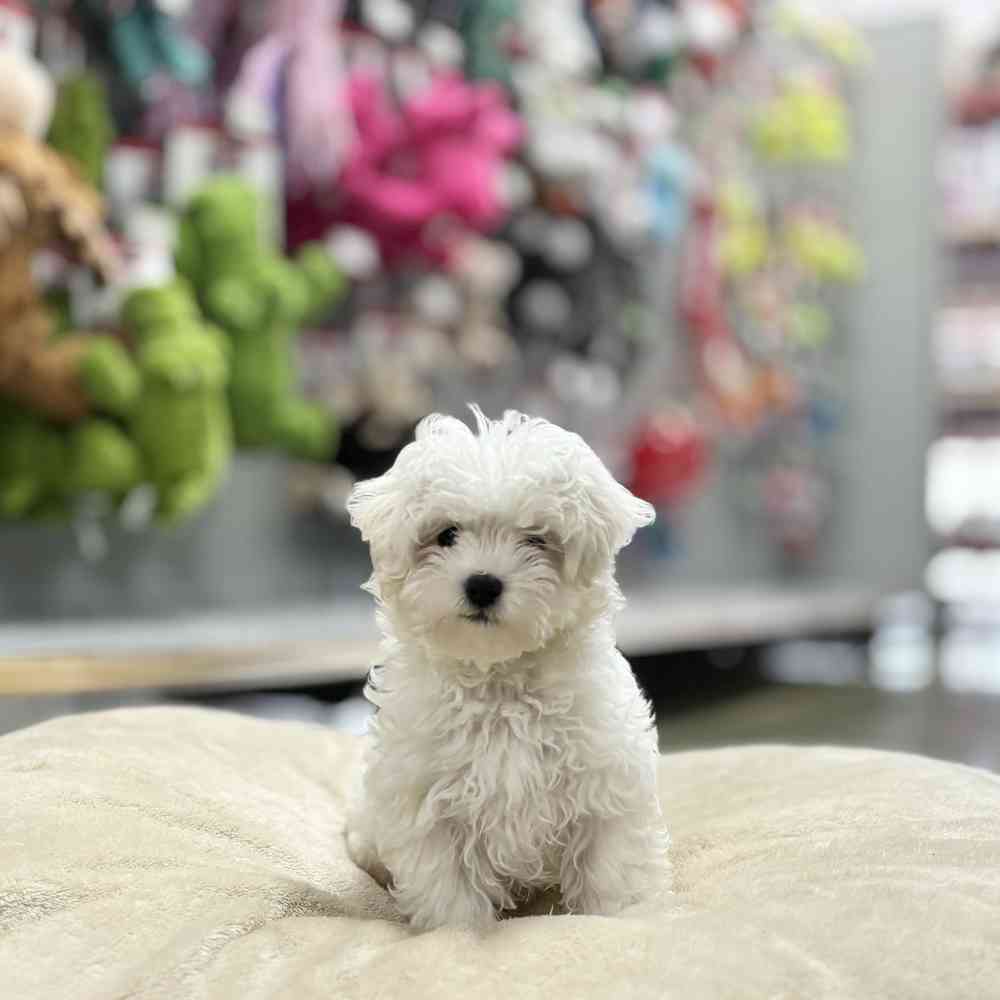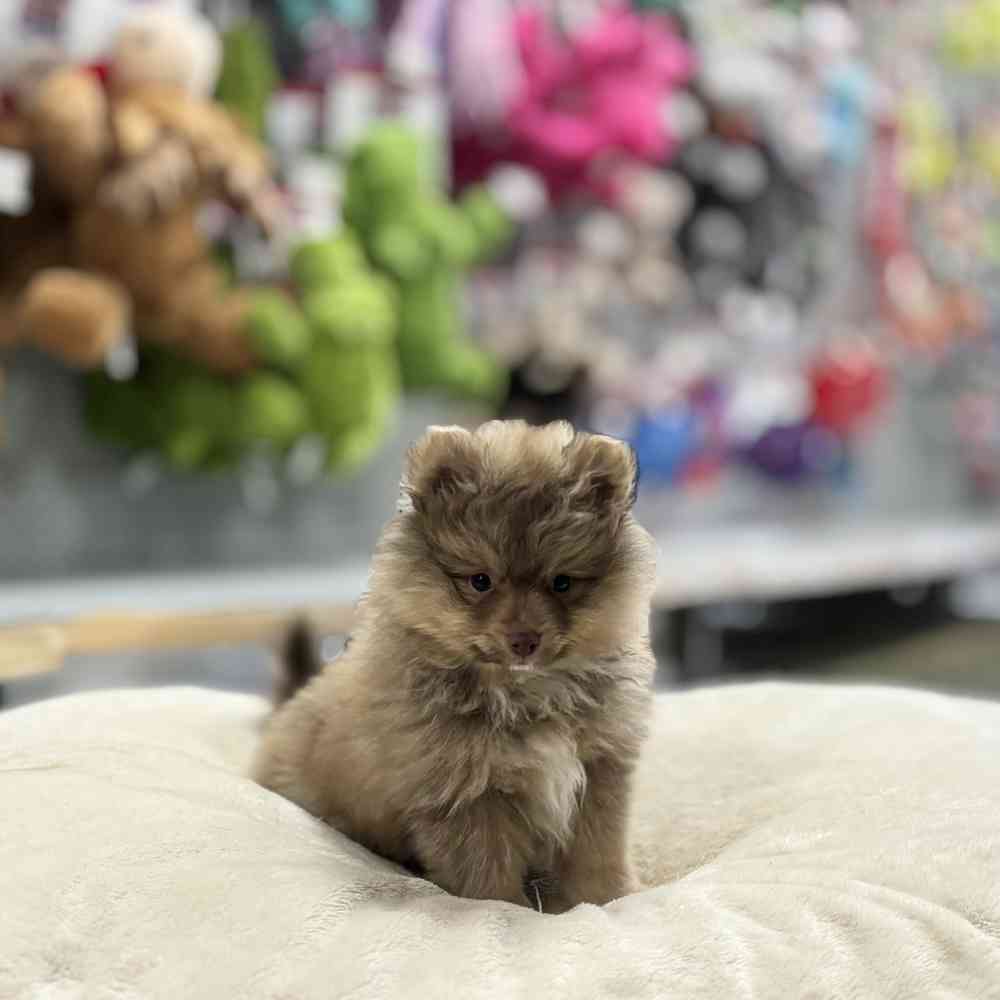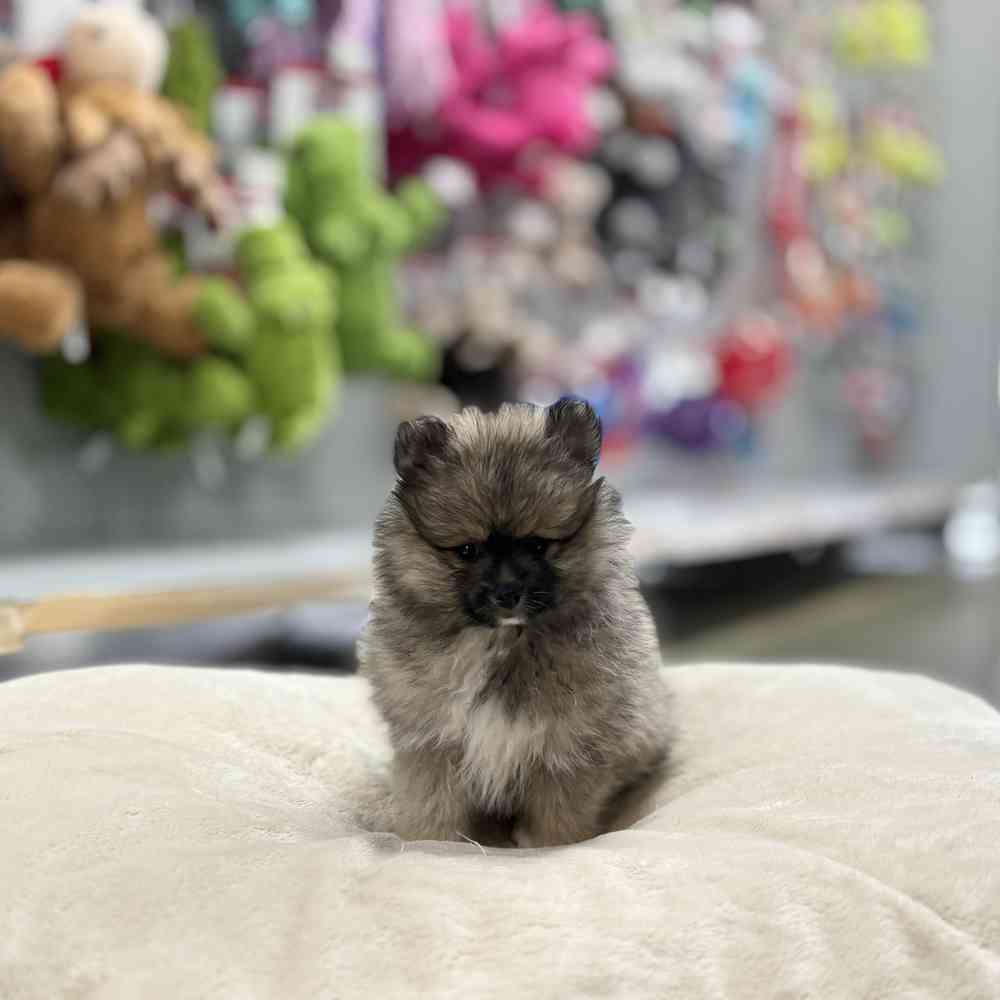
Apartment Friendly
AKC Registrable
Family Dog
Shih Tzu
That face! Those big dark eyes looking up at you with that sweet expression! It’s no surprise that Shih Tzu owners have been so delighted with this little “Lion Dog” for a thousand years. Where Shih Tzu go, giggles and mischief follow.
Available Pups
Puppy Knowledge
Breed Info
Clubs, Registries & Associations
American Canine Association Continental Kennel Club Universal Kennel Club International American Kennel Club United All Breed Registry America's Pet Registry, Inc. United Kennel Club (Based on breed recognition. See store for details on this particular puppy.)
Group
Toy
Heritage
The Shih Tzu is an ancient breed with skeletal remains found in human communities as far back as 10,000 years ago. The Shih Tzu is thought to be a cross between the Lhasa Apso and Pekingese.
Description
Small, up to 11” at the shoulders, weighing anywhere from 9-16 pounds. The Shih Tzu is a sturdy dog in a small package with a long, double coat that comes in colors of gold, white, red, black, liver, liver and white, black mask gold, black and white, blue and white, brindle and white, silver and white and occasionally a blue.
Health Awareness
The Shih Tzu has a life expectancy of 15 years and is prone to back diseases, ear infections, respiratory challenges, and teeth problems.
Personality
The Shih Tzu is alert, courageous, active, curious and clever little dog. Your Shih Tzu will want to cuddle and snuggle with you, being truly happy to get your affection. They are not pushovers, though, and will stand up for themselves if confronted. You need to be a calm, knowledgeable, and humane owner giving consistent and committed leadership to your Shih Tzu using only motivational training methods.
Exercise/Energy Level
The Shih Tzu requires a daily walk with off-leash play and running in a safe, fenced area. They also need mental stimulation so be sure to provide your Shih Tzu with plenty of interactive toys that challenge their problem-solving skills. This breed does not do well in warm temperatures due to the brachycephalic muzzle. Be sure to get your veterinarian’s permission before exercising your Shih Tzu in warm temperatures.
Additional Information
Grooming Requirements: Requires daily brushing and professional grooming. Coat: Long Shedding: Little to no shedding Hypoallergenic: Yes Apartment Living: Good for apartment living if given sufficient exercise Lap Dog: Yes Good With Children: Good with children when well socialized at an early age; may be best with older children who understand how to safely handle a small dog. Good With Other Pets: Good with other dogs and non-canine pets when socialized at an early age
Breed Standard
General Appearance
The Shih Tzu is a sturdy, lively, alert toy dog with long flowing double coat. Befitting his noble Chinese ancestry as a highly valued, prized companion and palace pet, the Shih Tzu is proud of bearing, has a distinctively arrogant carriage with head well up and tail curved over the back. Although there has always been considerable size variation, the Shih Tzu must be compact, solid, carrying good weight and substance. Even though a toy dog, the Shih Tzu must be subject to the same requirements of soundness and structure prescribed for all breeds, and any deviation from the ideal described in the standard should be penalized to the extent of the deviation. Structural faults common to all breeds are as undesirable in the Shih Tzu as in any other breed, regardless of whether or not such faults are specifically mentioned in the standard.
Size, Proportion, Substance
Size - Ideally, height at withers is 9 to 10½ inches; but, not less than 8 inches nor more than 11 inches. Ideally, weight of mature dogs, 9 to 16 pounds. Proportion - Length between withers and root of tail is slightly longer than height at withers. The Shih Tzu must never be so high stationed as to appear leggy, nor so low stationed as to appear dumpy or squatty. Substance - Regardless of size, the Shih Tzu is always compact, solid and carries good weight and substance.
Head
Head - Round, broad, wide between eyes, its size in balance with the overall size of dog being neither too large nor too small. Fault: Narrow head, close-set eyes. Expression - Warm, sweet, wide-eyed, friendly and trusting. An overall well-balanced and pleasant expression supersedes the importance of individual parts. Care should be taken to look and examine well beyond the hair to determine if what is seen is the actual head and expression rather than an image created by grooming technique. Eyes - Large, round, not prominent, placed well apart, looking straight ahead. Very dark. Lighter on liver pigmented dogs and blue pigmented dogs. Fault: Small, close-set or light eyes; excessive eye white. Ears - Large, set slightly below crown of skull; heavily coated. Skull - Domed. Stop - There is a definite stop. Muzzle - Square, short, unwrinkled, with good cushioning, set no lower than bottom eye rim; never downturned. Ideally, no longer than 1 inch from tip of nose to stop, although length may vary slightly in relation to overall size of dog. Front of muzzle should be flat; lower lip and chin not protruding and definitely never receding. Fault: Snipiness, lack of definite stop. Nose - Nostrils are broad, wide, and open. Pigmentation - Nose, lips, eye rims are black on all colors, except liver on liver pigmented dogs and blue on blue pigmented dogs. Fault: Pink on nose, lips, or eye rims. Bite - Undershot. Jaw is broad and wide. A missing tooth or slightly misaligned teeth should not be too severely penalized. Teeth and tongue should not show when mouth is closed. Fault: Overshot bite.
Neck, Topline, Body
Of utmost importance is an overall well-balanced dog with no exaggerated features. Neck - Well set-on flowing smoothly into shoulders; of sufficient length to permit natural high head carriage and in balance with height and length of dog. Topline - Level. Body -Short-coupled and sturdy with no waist or tuck-up. The Shih Tzu is slightly longer than tall. Fault: Legginess. Chest -Broad and deep with good spring-of-rib, however, not barrel-chested. Depth of ribcage should extend to just below elbow. Distance from elbow to withers is a little greater than from elbow to ground. Croup - Flat. Tail - Set on high, heavily plumed, carried in curve well over back. Too loose, too tight, too flat, or too low set a tail is undesirable and should be penalized to extent of deviation.
Forequarters
Shoulders - Well-angulated, well laid-back, well laid-in, fitting smoothly into body. Legs - Straight, well-boned, muscular, set well-apart and under chest, with elbows set close to body. Pasterns - Strong, perpendicular. Dewclaws - May be removed. Feet - Firm, well-padded, point straight ahead.
Hindquarters
Angulation of hindquarters should be in balance with forequarters. Legs - Well-boned, muscular, and straight when viewed from rear with well-bent stifles, not close set but in line with forequarters. Hocks - Well let down, perpendicular. Fault: Hyperextension of hocks. Dewclaws - May be removed. Feet - Firm, well-padded, point straight ahead.
Coat
Coat - Luxurious, double-coated, dense, long, and flowing. Slight wave permissible. Hair on top of head is tied up. Fault: Sparse coat, single coat, curly coat. Trimming - Feet, bottom of coat, and anus may be done for neatness and to facilitate movement. Fault: Excessive trimming.
Color and Markings
All are permissible and to be considered equally.
Temperament
Affectionate, Playful, Outgoing
Overview
About
Shi Tsu (pronounced in the West “sheed-zoo” or “sheet-su”; the Chinese say “sher-zer”), weighing between 9 to 16 pounds, and standing between 8 and 11 inches, are surprisingly solid for dogs their size. The coat, which comes in many colors, is worth the time you will put into it—few dogs are as beautiful as a well-groomed Shih Tzu. Being cute is a way of life for this lively charmer. The Shih Tzu is known to be especially affectionate with children. As a small dog bred to spend most of their day inside royal palaces, they make a great pet if you live in an apartment or lack a big backyard. Some dogs live to dig holes and chase cats, but a Shih Tzu’s idea of fun is sitting in your lap acting adorable as you try to watch TV.
History
When you own a Shih Tzu, you own a little bit of Chinese history. Imperial breeders in the palace of the Chinese emperor developed the Shih Tzu (meaning “lion dog”) centuries ago from Tibetan breeding stock. The breed is most likely the product of crosses of two even older Sino-Tibetan breeds, the Lhaso Apso and the Pekingese. For hundreds of years, Shih Tzu lived the life of royal lap warmers and were pampered by emperors and their families. It is said emperors would give valuable gifts to breeders of Shih Tzu who produced the most beautiful and affectionate dogs. The breed remained hidden behind palace walls, virtually unknown to the outside world, until the1930s. Breed clubs formed in Peking and later England further refined the breed, not without much debate among fanciers as to proper type. The Shih Tzu entered the AKC Stud Book in 1969. Since then, the Shih Tzu has been one of the most popular toy dogs here and in the United Kingdom. And they still treat their owners, no matter who they might be, like royalty. Owners as diverse as Queen Elizabeth II and Miley Cyrus have succumbed to the Shih Tzu’s exotic charms.
Standard
The Shih Tzu is a sturdy, lively, alert toy dog with long flowing double coat. Befitting his noble Chinese ancestry as a highly valued, prized companion and palace pet, the Shih Tzu is proud of bearing, has a distinctively arrogant carriage with head well up and tail curved over the back. Although there has always been considerable size variation, the Shih Tzu must be compact, solid, carrying good weight and substance. Even though a toy dog, the Shih Tzu must be subject to the same requirements of soundness and structure prescribed for all breeds, and any deviation from the ideal described in the standard should be penalized to the extent of the deviation.
Nutrition
The Shih Tzu should do well on a high-quality dog food, whether commercially manufactured or home-prepared with your veterinarian’s supervision and approval. Any diet should be appropriate to the dog’s age (puppy, adult, or senior). Some dogs are prone to getting overweight, so watch your dog’s calorie consumption and weight level. Treats can be an important aid in training, but giving too many can cause obesity. Learn about which human foods are safe for dogs, and which are not. Check with your vet if you have any concerns about your dog’s weight or diet. Clean, fresh water should be available at all times.
Grooming
A Shih Tzu with a long coat requires daily brushing. Use a good-quality wire brush with flexible pins, and layer the hair to be sure you reach to the skin. A bath about every three or four weeks will help to keep the coat clean and at its best. Remember to comb the mustache and topknot daily, and gently clean the corner of the eyes with a damp cloth. To protect the Shih Tzu’s eyes from being irritated, the hair on the top of the head should be trimmed short or tied up into a topknot. If you don’t want to have to spend time on your dog’s coat, the Shih Tzu can look adorable when clipped into a “puppy trim” by a professional groomer. Trimming nails and cleaning ears should be part of the Shih Tzu’s grooming routine.
Exercise
The Shih Tzu was bred to be a house companion. As such, they require minimal exercise. Short daily walks with their owner and indoor playtime will satisfy the activity needs of this small, short-legged companion.
Training
Training a Shih Tzu can be both an amusing and a frustrating experience. The breed tends to charm his owner into letting him have his own way, which can result in a chubby, less-than-completely-housebroken pet who is difficult to groom. Because Shih Tzu are such people dogs, training methods based on praise and rewards work best. Harsh corrections should not be used with this breed. Introduce desired new behaviors a bit at a time, be firm, and never give in while the dog is misbehaving. If he nips or jumps up on you, ignore him until he settles down, then praise him. Early socialization and puppy training classes are recommended and help to ensure that the Shih Tzu grows into a well-adjusted, well-mannered companion. When enrolling in a puppy class, be sure that the training methods used in the class are based on positive reinforcement.
Health
Because of their heavy coats and short faces, Shih Tzu do not tolerate heat well and are not good swimmers. Most Shih Tzu are generally healthy, and responsible breeders screen their stock for health conditions such as such as hip dysplasia, patellar luxation (a slipped kneecap), eye anomalies including cataracts, progressive retinal atrophy, retinal detachment, and corneal dryness and inflammation from excessive exposure to the air because of improperly closing eyelids.
Trivia
Interesting To Know
The name Shih Tzu translates as Lion Dog







